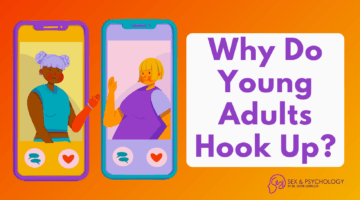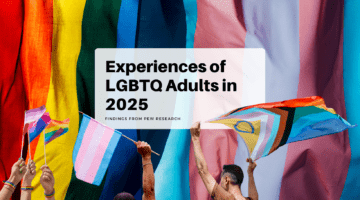More Scientific Evidence That Bisexuality Is A Distinct Sexual Orientation
October 31, 2014 by Justin Lehmiller
Bisexuality is a controversial sexual orientation among both scientists and laypersons alike. Indeed, there is a popular stereotype that bisexuality “is just a layover on the way to gaytown” (if I may borrow a line from Carrie Bradshaw), and some studies have seemingly provided support for this idea by showing that bisexual men tend to exhibit sexual arousal patterns that look fairly similar to gay men. However, there are a lot of limitations to the existing research on bisexuality. For instance, most of this work has focused on men, meaning that we don’t know as much about bisexual women. In addition, most of this research has focused on genital responses to very specific forms of pornography (i.e., two men having sex vs. two women having sex). This methodology creates sampling issues, given that not everyone is willing to participate in such invasive studies, while the pornography used confounds the gender of the performers with different sexual behaviors, making it unclear what viewers are actually responding to. A new study just published in the Archives of Sexual Behavior addressed some of these limitations, with the results providing evidence that both male and female bisexuality are distinct from homosexuality.
In this study, 104 self-identified bisexuals (50 men and 54 women) aged 18-35 participated. In addition to identifying as bisexual, participants had to respond affirmatively to each of the following questions:
“(1) Currently, do you believe you have the capacity to be sexually attracted to and sexually responsive to a man? and (2) Currently, do you believe you have the capacity to be sexually attracted to and sexually responsive to a woman?”
Participants viewed a series of 50 photos (half consisted of adult men and the other half consisted of adult women) drawn from popular magazines and fashion websites/catalogs. Participants went through the photos at their own pace and, for each photo, rated how sexually appealing the person was on a scale of 1 (not at all sexually appealing) to 7 (extremely sexually appealing). Unbeknownst to participants, the researchers recorded how long they spent looking at each photo.
Results for the bisexual participants were compared to results obtained from an identical study involving gay and lesbian participants published in 2010.
What the researchers found was that both bisexual men and women exhibited significantly different response patterns from gay men and lesbians. First, with regard to photo viewing time, there was only a small difference in the amount of time spent viewing photos of men and women among bisexuals—they spent very similar amounts of time on each sex. In contrast, gay men and lesbians spent much long longer looking at photos of their desired sex compared to the other sex (to be precise, they spent about an extra one-third longer looking at photos of their desired sex).
Second, with regard to sexual appeal ratings, the pattern was very similar. Among bisexuals, the difference in sexual appeal ratings between the male and female photos was much smaller than the difference observed among gay men and lesbians, who overwhelmingly rated their desired sex as much more appealing. So, just as the word “bisexual” implies, bisexual participants seemed to be more interested in both men and women compared to gays and lesbians.
One other interesting finding from this study was that bisexual women showed slightly more gender-specificity in their sexual interest and appeal ratings compared to bisexual men. Specifically, the difference in sexual interest/appeal ratings between the male and female photos was larger among bisexual women, with both measures favoring female photos. Among bisexual men, the difference in how they responded to the sexes was smaller, and both measures went in different directions (one favored male photos and the other favored female photos).
Overall, the results of this study would appear to refute the stereotype that bisexuals are just gays and lesbians who haven’t come out yet. Of course, a single study is never definitive, but there is other research out there that supports this conclusion (see here) and the broader idea that bisexuality is a distinct sexual orientation characterized by its own unique pattern of sexual interest.
Want to learn more about Sex and Psychology ? Click here for previous articles or follow the blog on Facebook (facebook.com/psychologyofsex), Twitter (@JustinLehmiller), or Reddit (reddit.com/r/psychologyofsex) to receive updates.
To learn more about this research, see: Rullo, J. E., Strassberg, D. S., & Miner, M. H. (in press). Gender-specificity in sexual interest in bisexual men and women. Archives of Sexual Behavior.
Image Credit: 123RF
You Might Also Like:

Dr. Justin Lehmiller
Founder & Owner of Sex and PsychologyDr. Justin Lehmiller is a social psychologist and Research Fellow at The Kinsey Institute. He runs the Sex and Psychology blog and podcast and is author of the popular book Tell Me What You Want. Dr. Lehmiller is an award-winning educator, and a prolific researcher who has published more than 50 academic works.
Read full bio >


